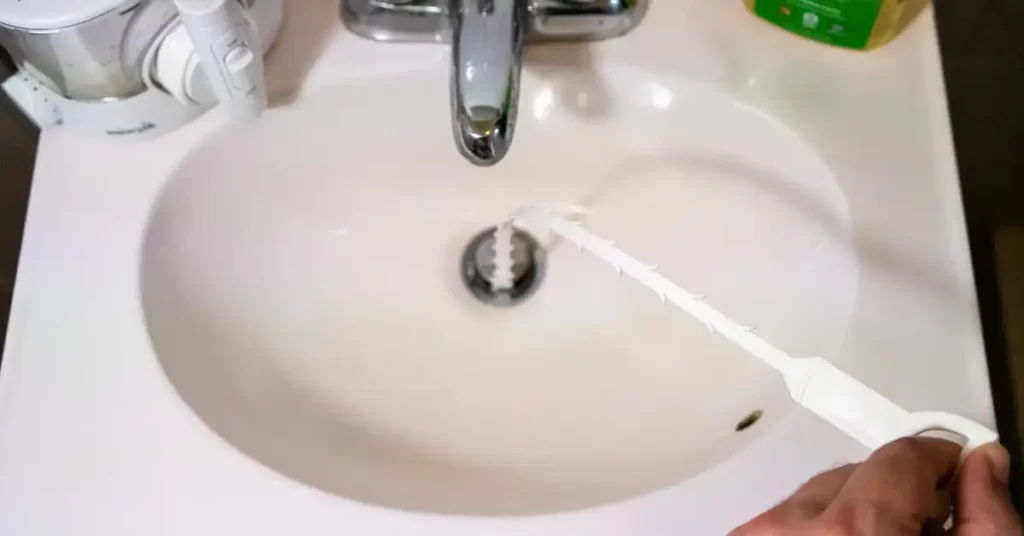Does your sink fill when it should be draining? You’ve probably already figured out it’s clogged, but you may not know what’s causing it. Various things can cause clogged drains, so knowing how to move forward and get your sink working properly can be difficult.
There’s no single solution for a clogged sink. If you cannot unclog your sink on your own, it may be time to contact a professional plumber. Plumbers have the knowledge and specialized tools to make fixing a clogged sink a breeze.
Let’s learn the different methods of how to fix a clogged sink.
Boiling Water Method
This is perhaps the easiest method to unclog your sink! First, make sure your sink is fully drained. Fill a pot or kettle with water and bring it to a boil. Once the water is boiling, slowly pour it down the sink. If the boiling water can clear the clog immediately, you can pour the rest down the sink without overfilling the basin.
Some clogs may be stubborn, so you can repeat the process a few times if needed. However, if, after several attempts, the sink is still not draining properly, you will need to try another method.
Remember that boiling water can crack porcelain, so don’t attempt this method if your sink is made of this material.
Plunger Method
You use your plunger to unclog the toilet, but did you know you can use it to unclog your sink too? This method requires a plunger small enough to fit over the sink drain.
First, remove the stopper and fill the sink, so the drain is covered with a few centimetres of water. Next, centre the plunger over the drain. Use force to create a strong seal between the plunger and the drain.
Plunge up and down for fifteen to thirty seconds. When you remove the plunger, the clog will ideally be dislodged. You can try this method multiple times for stubborn clogs.
Vinegar and Baking Soda Method
This simple method uses ingredients you likely already have in your pantry. Before you begin, ensure your sink is fully drained. Pour ¼ cup of baking soda down the drain. Next, slowly pour 1 – 2 cups of vinegar down the drain.
When you’ve poured the vinegar, plug the drain with a stopper or a towel. The chemical reaction between the baking soda and vinegar can dislodge whatever clogs the drain. After twenty minutes, pour some boiling water down the drain to flush everything out. You can repeat this process a few times if necessary.

Drain Snake Method
If none of the above methods have worked, you may need to physically remove the clog with a drain snake. Depending on how deep the clog is inside the pipe, you may want to opt for a plumber’s snake. These snakes are metal and have a crank, making them ideal for heavier-duty clogs.
However, if the clog is close enough to the surface, a plastic snake or drain stick will work. To get started, insert the end of the snake into the drain. If using a metal snake, turn the crank to get the snake further into the pipe. Once you feel resistance, you have located the clog. Turn and twist the snake or drain stick against the clog until you feel it gives way.
Continue to twist as you pull the snake out of the drain. The clog will either be removed by the snake or break apart and be able to move through the pipes. Once you have removed the snake from the drain, run hot water to ensure the clog is flushed away.
P-trap Removal Method
Sometimes, the above methods are insufficient to remove a heavy clog in the drain. If this is true for you, you can try removing the P-trap. The P-trap is a two-piece pipe that curves at the bottom. Before removing the P-trap, place a bucket underneath. To remove the P-trap, you may need a screwdriver or wrench.
Remove the P-trap carefully, as water may drain out once removed. Once disconnected, look inside the P-trap to see if the clog is inside this part of the pipe. You can dislodge a plastic snake or other thin, flexible object. If you cannot locate the clog, insert a snake inside the pipe’s opening until you feel resistance.
Twist the snake to grab the clog and pull it from the drain. Replace the P-trap and run some water in the sink. If you have successfully removed the clog, the sink will drain normally.






